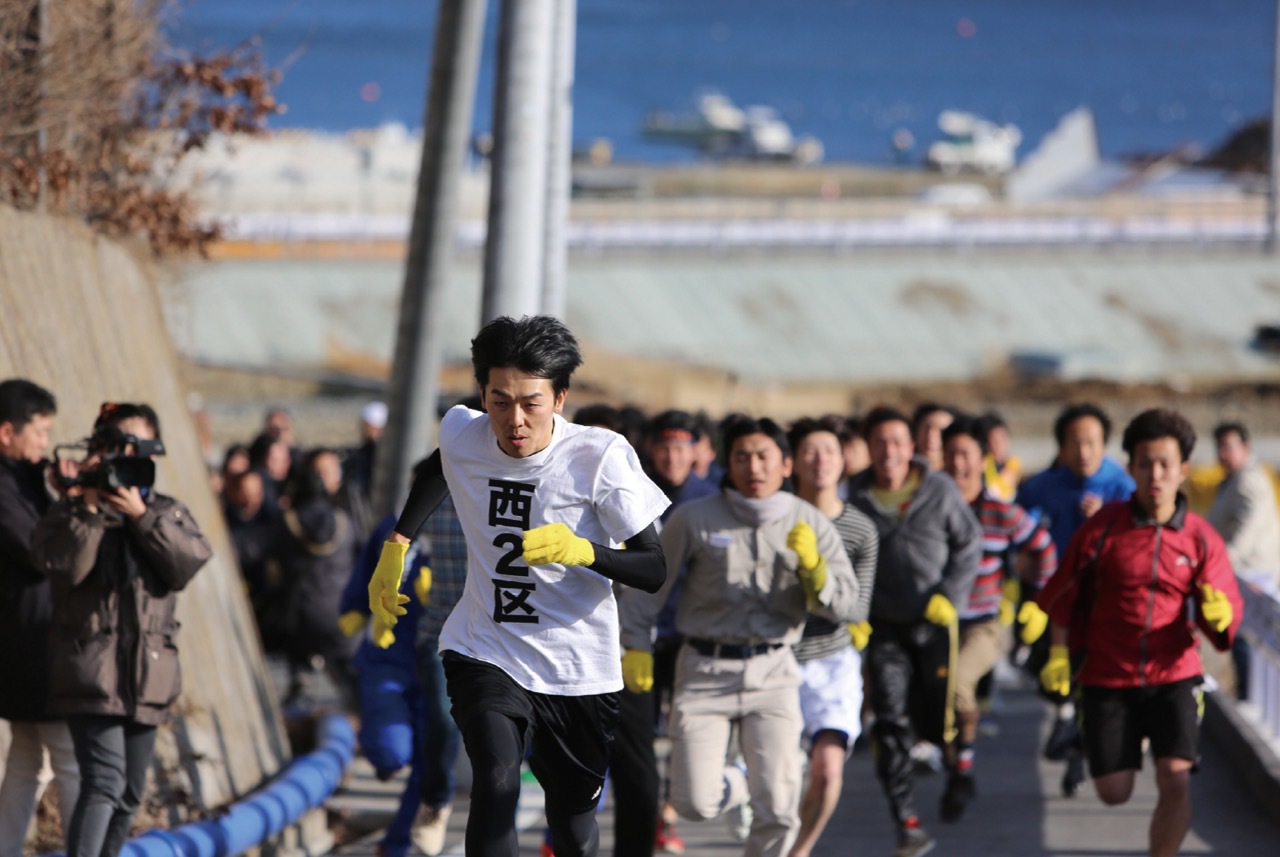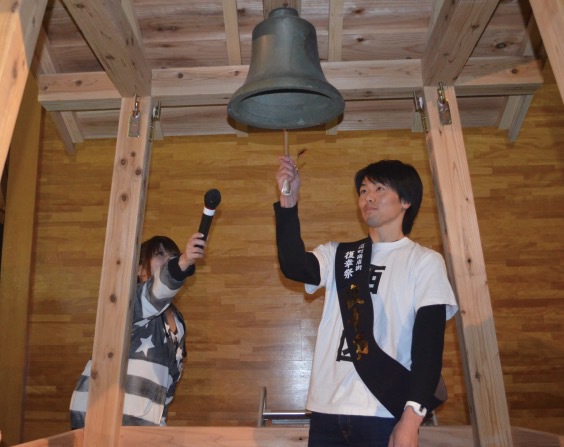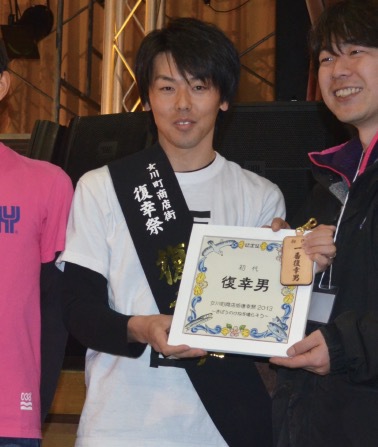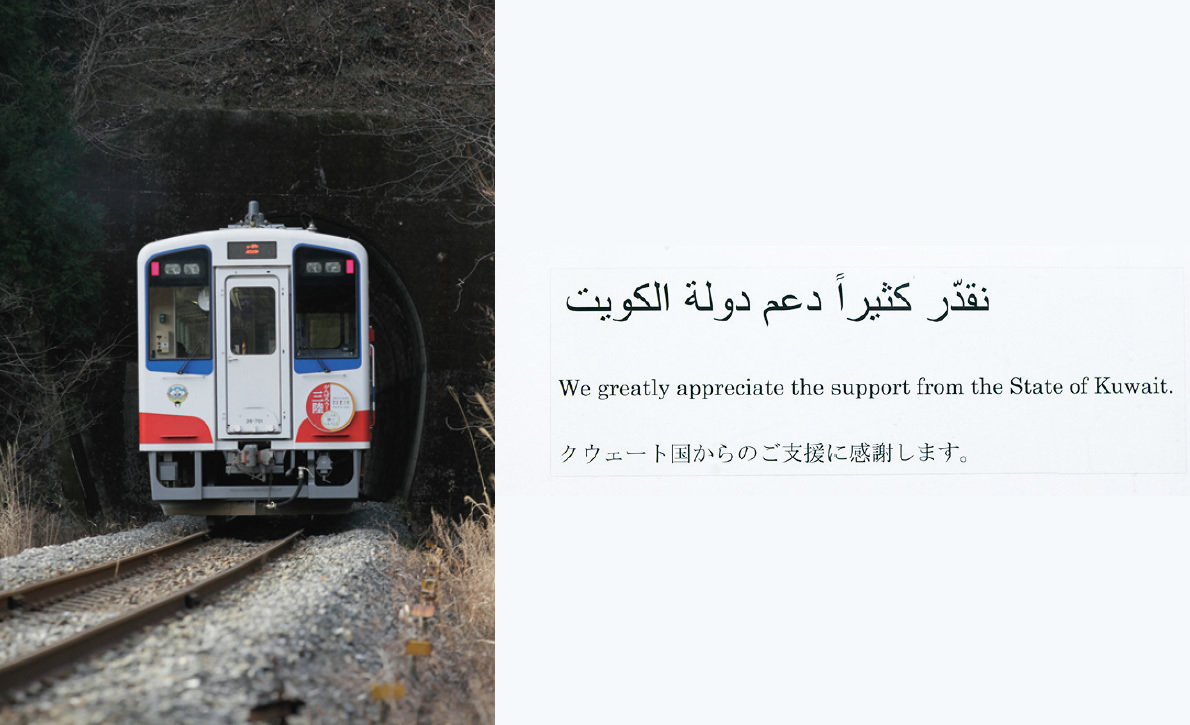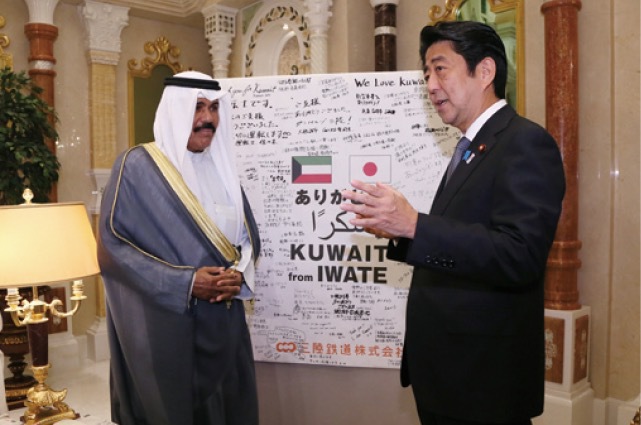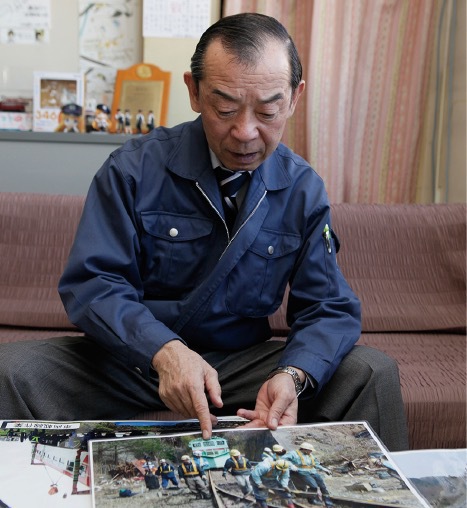Onagawa : When the Great East Japan Earthquake struck on March 11, 2011, the ensuing tsunami almost completely wiped out the coastal town of Onagawa in Miyagi Prefecture. Three years after the quake, in March 2014, the town held a festival called “Fukko-sai” ( 復幸祭). Fukko ( 復興), which means “reconstruction,” is commonly used to refer to the postquake rebuilding effort. The name of the festival uses the same pronunciation but a different second character, 幸, which means “happiness.” So it was called the “Happiness Recovery Festival.”
The day before the festival, Onagawa held a race starting at 3:32 p.m., the time that the tsunami struck in 2011, on a course from where the town center formerly stood to a safe spot on high ground. The first three runners to reach the goal won the title Fukko-otoko, or “Happiness Recovery Man.”
It may seem bizarre to commemorate a tsunami with a racing event, but in Japan many observances of past troubles employ festivals or even divinities. By staging annual festivals in remembrance of these events, people pass on the memories from generation to generation.
As Onagawa’s mayor, Yoshiaki Suda, explains, “We want to make this not just a simple event but a tradition. Festivals have long been occasions for prayer and remembrance. I wanted to make this something that would transmit the lessons of the tsunami to future generations.”
Participants in the March 2014 pre-festival race in Onagawa run at full speed uphill from the area hit by the tsunami. Their goal was the Inochi no Hi (Life Monument) that has been raised on the higher ground of the town’s junior high school.
To mark the start of the festival, the top runner rings the Kibo no Kane, or Bell of Hope, which had been in front of the town’s train station before the tsunami and was found in the rubble after the disaster.
Iwate : The Sanriku Railway runs along the Pacific coast of Iwate Prefecture, weaving through the terrain of the heavily indented coastline. Its route links the seaside communities of Iwate that were devastated by the March 2011 quake and tsunami. Though the 107.6-kilometer course was designed to be safe from tsunamis, 5.8 km of track was washed away, along with three of the railway’s 16 cars. In addition, the earthquake caused heavy damage on other portions of the route, causing bridges to collapse, tracks to subside, and tunnel walls to crack.
Five days after the disaster, however, the employees of the Sanriku Railway, conscious of its role as a symbol of normal life in the area, managed to resume partial operations. And in the communities where the trains were still not running, residents took it upon themselves to clean up and weed the areas around the local stations. Iwate Prefecture used some relief funds it had received from Kuwait on something that would last and bought three railway cars to replace the ones that were lost. The cars are marked with the Kuwaiti national emblem and carry the inscription “We greatly appreciate the support from the State of Kuwait” in Arabic, English, and Japanese.
The entire line will reopen for service on April 6, 2014 and Sanriku Railway President Masahiko Mochizuki declared with a smile, “A new car bought with Kuwait’s support will be the first one to run on the fully reopened railway.”
The new Sanriku Railway cars bought with relief funds from Kuwait carry the country’s national emblem on their front and back. The cars also carry inscriptions in Arabic, English, and Japanese expressing gratitude for Kuwait’s support.
Visiting Kuwait in August 2013, Prime Minister Shinzo Abe meets with Crown Prince Sheik Nawaf and presents a poster inscribed with messages of gratitude from the employees of the Sanriku Railway and residents of communities along its route.
Mochizuki, the president of Sanriku Railway, points at a picture of one of the new cars, expressing appreciation and saying that the railway will make good use of them.































































































































